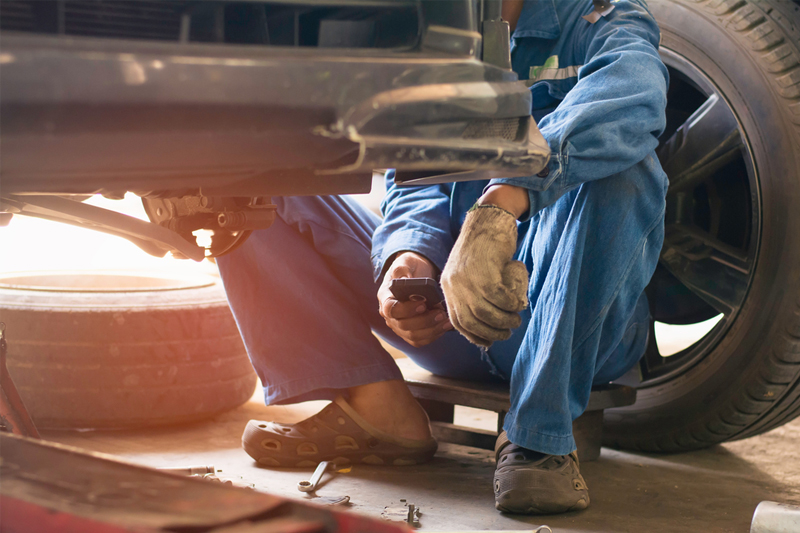
Being subject to considerable wear and tear, brake pads need to be periodically maintained and replaced. Lumag provides CVW readers with a guide to the most likely causes of wear.
Green Coat
Lumag has recently confirmed the launch of Green Coat – the company’s latest advancement in brake pad technology. The result of a £140,000 investment, Green Coat provides the ability to shorten the braking distance by 3m at speeds from 50 to 0kph during the breaking-in of newly installed pads.
Anyone in the brake pad sector will be familiar with the EU legislation ECE R90, which outlines, amongst other things, the maximum allowed braking distance. Whilst manufacturers heed these parameters, very often full braking efficiency is not achieved until after 200 – 300km of braking activity.
This phenomenon – more commonly known as “green fade” – is defined as a reduction in braking force caused by excessive and forceful pressing down on the brake pedal, when brake pads have not yet been broken-in. It was for this reason that Green Coat has been introduced by Lumag.
Put simply, Green Coat is the name given to a thin layer made of silicates applied to the outer friction surface of a pad. Brake pads featuring a layer of Green Coat provide a higher coefficient of friction right from the first application of the brakes, which significantly shortens the braking distance during the bedding in process.
The layer lasts for a few dozen brake applications, which overlaps with the time a new brake needs to reach full efficiency.
ISSUE: EVEN WEAR
The pads have approximately the same amount of friction material on both.
CAUSE: Proper brake function.
SOLUTION: Replacement of the brake pads and hardware such as abutment and anti-rattle clips is required, as well as servicing the caliper guide pins and slides.
ISSUE: OUTER PAD WEAR
The outer pad continues to ride on the rotor after the caliper releases, resulting in the outboard pad having markedly less friction material than the inboard pad.
CAUSE: Seizing guide pins, bushings and slides are usually the cause of the issue.
SOLUTION: Correcting this issue is usually fairly straightforward, and is normally rectified by servicing or replacing the guide pins, bushings, or the entire caliper, and replacing the brake pads.
ISSUE: INNER PAD WEAR
The inboard brake shows more wear than the outboard pad.
CAUSE: The caliper piston doesn’t return to the rest position due to a worn seal, damage, or corrosion; it can also be caused by a problem with the master cylinder.
SOLUTION: Take the same steps as fixing the outer pad wear, as well as inspecting the hydraulic brake system and the caliper for residual pressure and guide pin hole or piston boot damage, respectively. If the pin holes or piston boot are corroded or damaged, then replacement is necessary.
ISSUE: TAPERED PAD WEAR
The friction material is worn in a horizontal or vertical wedge pattern.
CAUSE: Improper pad installation, as well as guide pin wear, or having a single guide pin or slide seizing.
SOLUTION: The procedure for rectifying this kind of wear is the same as when correcting outer pad wear.
ISSUE: CRACKING, GLAZING, OR LIFTED EDGES ON THE PADS
The friction material is physically damaged and shows signs of thermal distress.
CAUSE: Overuse, improper break-in procedure, hydraulic system problems, seized caliper components, defective pads, and the parking brake not fully retracting are some common problems.
SOLUTION: Replacing and breaking-in the new pads properly. The parking brake may also need adjusting.
ISSUE: OVERLAPPING FRICTION MATERIAL
The top edge of the pad overlaps the top of the rotor.
CAUSE: Wear on the guide pins, caliper or caliper bracket or having the wrong rotor or pad on the vehicle.
SOLUTION: Replace the pads and fit the vehicle with OE specification diameter rotors.

Fact and friction
Following this advice, Lumag has highlighted two of its key brake pad ranges below:
LU 801 is a modern friction material meeting the requirements of brake manufacturers for OE installation in vehicles. The material boasts:
- Environmentally friendly composition, free of heavy metals, such as antimony.
- High cold and hot braking efficiency, in temperatures reaching as high as 850°C.
- High braking efficiency across the whole range of speeds used.
- High resistance to wear.
LU 903 is ideal for bus and municipal vehicle applications. These vehicles, especially inner city vehicles, brake often, resulting in high temperatures, leading to greater wear and tear. Benefits include:
- A lower friction coefficient than typical CV materials.
- Brake pad material featuring chamfers, reducing the risk of vibration and squeal during braking.
- Designed with the comfort of bus passengers and drivers in mind.








